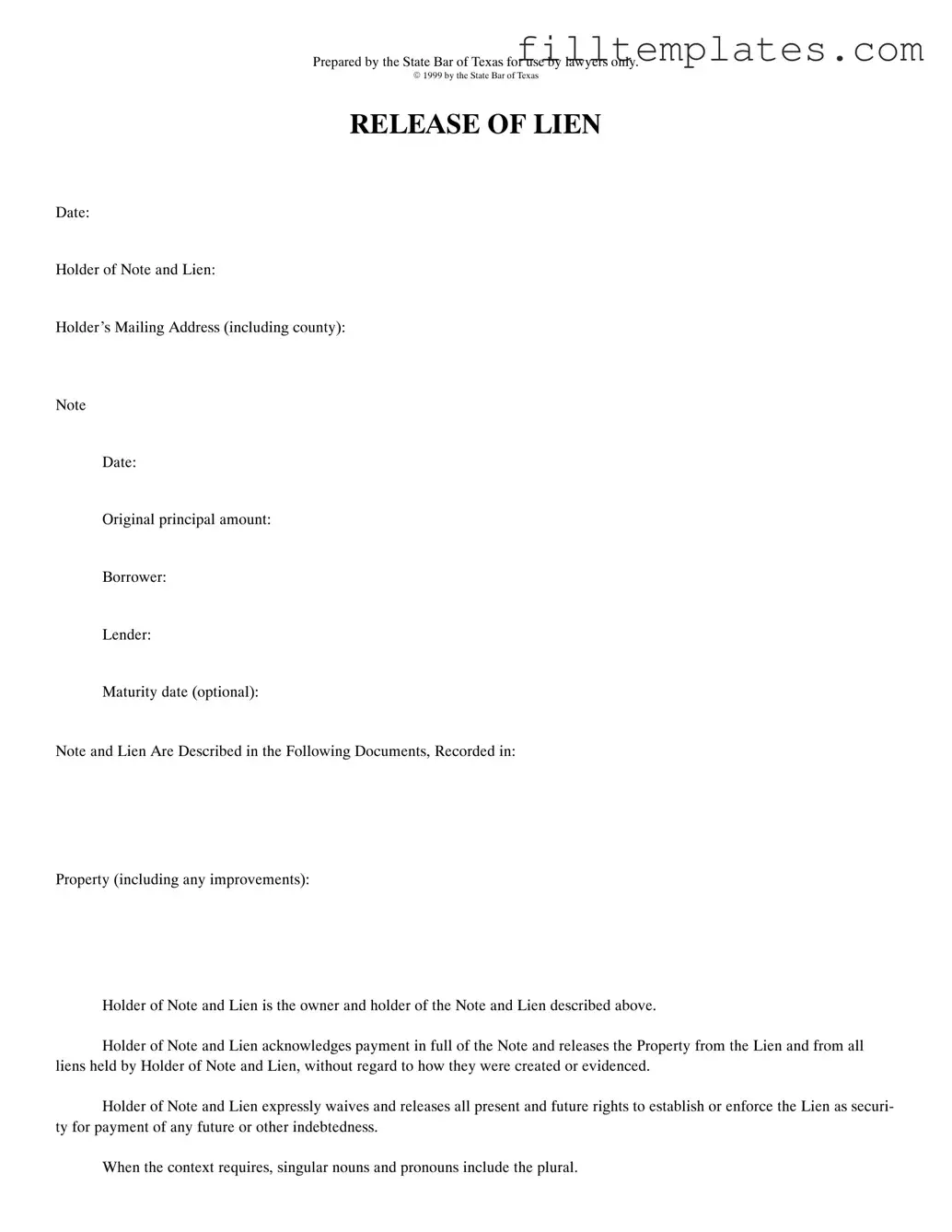Download Release Of Lien Texas Template
The Release of Lien Texas form is a legal document used to formally release a lien on a property once the associated debt has been fully paid. This form is essential for property owners and lenders, as it ensures that the property is free from any claims related to the lien. By completing this document, the holder of the lien acknowledges receipt of payment and waives any future rights to enforce the lien against the property.
Open Release Of Lien Texas Editor
